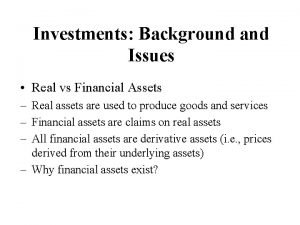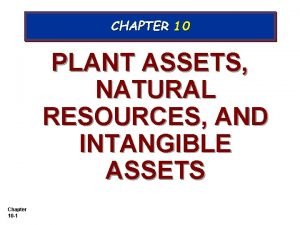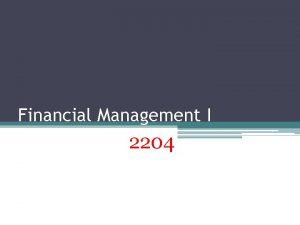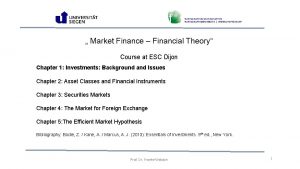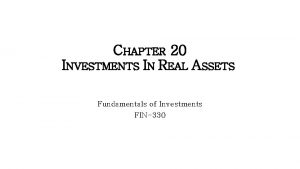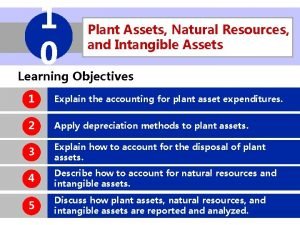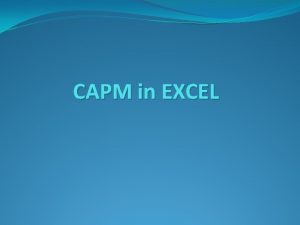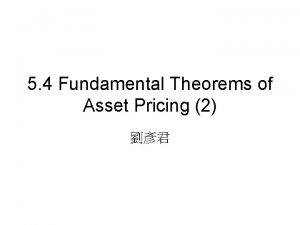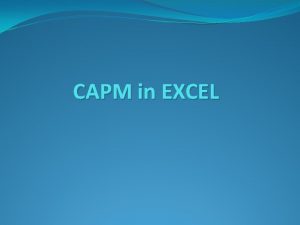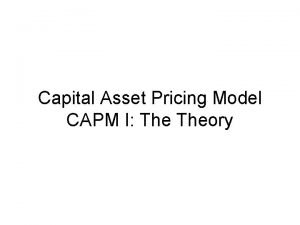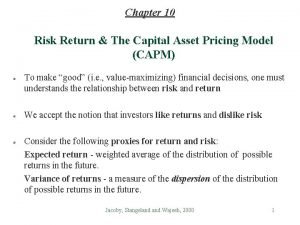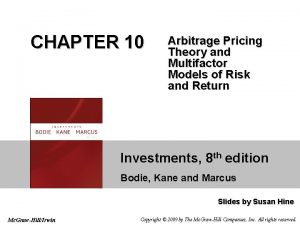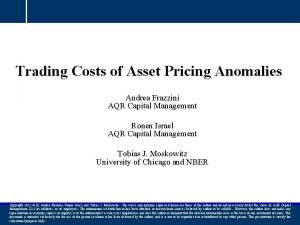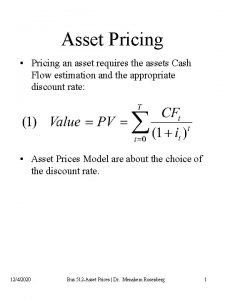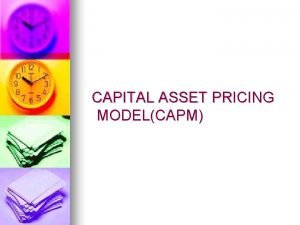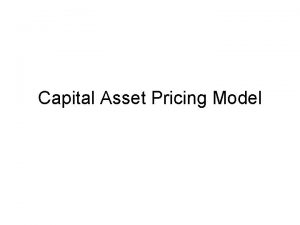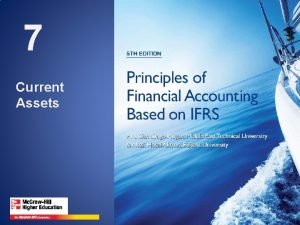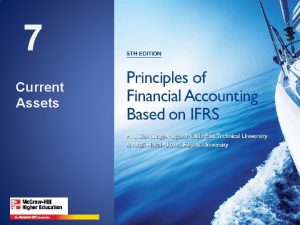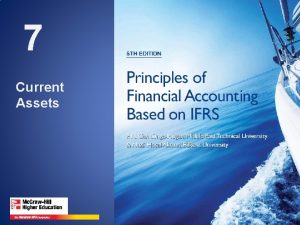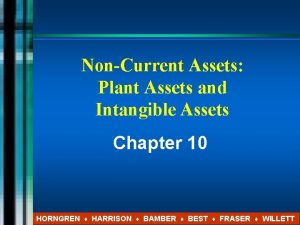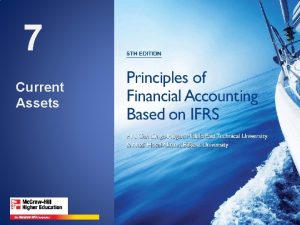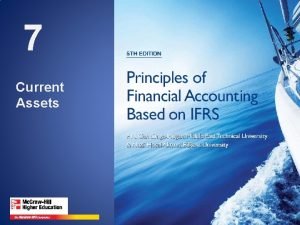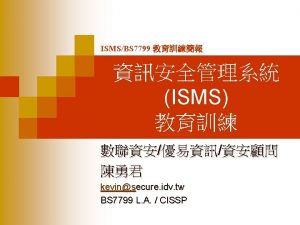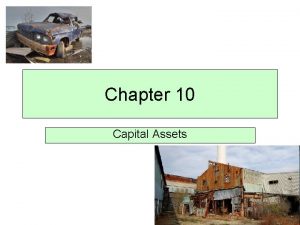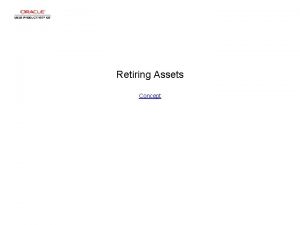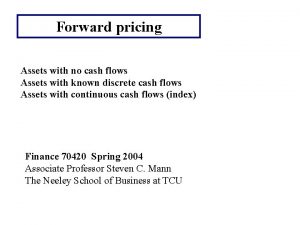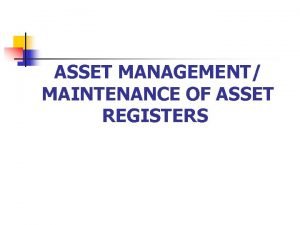Asset Pricing Pricing an asset requires the assets


















- Slides: 18

Asset Pricing • Pricing an asset requires the assets Cash Flow estimation and the appropriate discount rate: • Asset Prices Model are about the choice of the discount rate. 11/30/2020 Fin 307 -Asset Prices | Dr. Menahem Rosenberg 1

Portfolio with Assets • A portfolio with two assets, 1 and 2. • Using the past to project the future: • We can use historical return to evaluate the mean return and its standard deviation, though we should remains on watch, whether the past really projects the future. 11/30/2020 Fin 307 -Asset Prices | Dr. Menahem Rosenberg 2

Limits of Diversification • What would happen to the riskiness of an average 1 -stock portfolio as more randomly selected stocks were added? • sp would decrease because the added stocks would not be perfectly correlated. 11/30/2020 Fin 307 -Asset Prices | Dr. Menahem Rosenberg 3

Limits of Diversification sp (%) Company Specific Risk 35 Stand-Alone Risk, sp 20 Market Risk 0 10 11/30/2020 20 30 40 # Stocks in Portfolio Fin 307 -Asset Prices | Dr. Menahem Rosenberg 4

Asset Risk • we observed that there were two kinds of risk – diversifiable or individual risk – Nondiversifiable or market risk • We also observed that in the limit as the number of securities becomes very large, the portfolio risk approaches the average covariance, which can be considered Nondiversifiable or systematic risk, . 11/30/2020 Fin 307 -Asset Prices | Dr. Menahem Rosenberg 5

• Stand-alone vs Market Risk • We saw that there was individual-stand alone risk and market risk Assume that each equity’s return is the composition of two random variables: – one associated with the market’s return – one associated with the companyspecific return Market risk is that part of a security’s standalone risk that cannot be eliminated by diversification, and is measured by beta. Firm-specific risk is that part of a security’s stand-alone risk that can be eliminated by proper diversification (2) Stand Alone Risk = Market risk +Firm-specific risk 11/30/2020 Fin 307 -Asset Prices | Dr. Menahem Rosenberg 6

Specifying the Model: Assumptions • The risk-free rate is constant during the investment the period • Firm-specific return on any stock x – is not correlated to the firm-specific return on any other stock y – is correlated with the market return • Investors forecasts agree with respect to expectations, standard deviations, and correlations of the returns of risky securities • Therefore all investors hold risky assets in the same relative proportions • Investors behave optimally • In equilibrium, prices adjust so that aggregate demand for each security is equal to its supply 11/30/2020 Fin 307 -Asset Prices | Dr. Menahem Rosenberg 7

CAPM • Equilibrium will determine the assets relative pricing, which leads to the Capital Asset Pricing model. • The stock compensated risk is measured as the risk it adds to a well diversified portfolio: – Case 1 : it does not add any additional risk, its return changes are the same as the markets return – Case 2: it adds risk to the portfolio, its return relative to the market volatility is higher. – Case 3: it reduces the portfolio risk, its return relative to the market volatility is lower. • CAPM will compare and determine risky assets return premium (risk premium) - their return above the risk free asset return. 11/30/2020 Fin 307 -Asset Prices | Dr. Menahem Rosenberg 8

CAPM • ri , si Security i required return and standard deviation • rm sm Market return and standard deviation • rf risk free return • Recall portfolio variance: • Or using the correlation coefficient: • The relative magnitude of the covariance term will determine the above cases 11/30/2020 Fin 307 -Asset Prices | Dr. Menahem Rosenberg 9

CAPM • The Covariance relative measure is beta: – Case 1 - the results in a b =1. 0, and the stock should have the same risk premium as the market risk premium. – Case 2 – b >1. 0 When added to the portfolio will increase the portfolio risk, therefore must add a bigger than the market risk premium. – Case 3 – b < 1. 0 When added to the portfolio will decrease the portfolio risk, therefore must add a smaller than the market risk premium. 11/30/2020 Fin 307 -Asset Prices | Dr. Menahem Rosenberg 10

Comment • Beta measures a stock’s market risk. It shows a stock’s volatility relative to the market • Beta shows how risky a stock is if the stock is held in a well-diversified portfolio. – CAPM explains the difference between the riskless interest rate and the expected rate of return on the market portfolio, but not their absolute levels – The absolute level of the equilibrium expected rate of return on the market portfolio is determined by such factors as – expected productivity – household intertemporal preferences for consumption 11/30/2020 Fin 307 -Asset Prices | Dr. Menahem Rosenberg 11

CAPM • According the CAPM, in equilibrium, the risk premium on any asset is equal the product of – b (or ‘Beta’) – the risk premium on the market portfolio • The model states that: 11/30/2020 Fin 307 -Asset Prices | Dr. Menahem Rosenberg 12

Security Market Line – The plot of a security returns(or sometimes security risk premiums) against security beta is the Security Market Line, • Note that the slope of the security market line is the market premium • By CAPM theory, all securities must fall precisely on the SML (hence its name) 11/30/2020 Fin 307 -Asset Prices | Dr. Menahem Rosenberg 13

Security Market Line SML: ri = rf + (rm – rf ) bi ri rm rf SML . T-bills 0 11/30/2020 1 Fin 307 -Asset Prices | Dr. Menahem Rosenberg bi 14

Portfolio beta • Assume a portfolio p made of N assets with return ri that follow the CAPM relationship. The portfolio return is: • Define 11/30/2020 Fin 307 -Asset Prices | Dr. Menahem Rosenberg 15

Equity Beta • When a corporation is all equity financed, its equity return is equal to its asset return. • Its equity beta is also equal to its asset beta. • When a corporation is also debt financed, its asset return is divided between its equity and debt, so that the asset return is divided between the equity return and the debt return. 11/30/2020 Fin 307 -Asset Prices | Dr. Menahem Rosenberg 16

Equity Beta • An all equity financed corporation: A L&E • Therefore Asset A = Equity Asset Income Equity = Income L&E r. A, r. E, r. D – asset, equity and debt return, respectively b. A, b. E, b. D – asset, equity and debt beta, respectively r. A = r. E 11/30/2020 and b. A= b. E Fin 307 -Asset Prices | Dr. Menahem Rosenberg 17

Equity Beta • A corporation financed with Debt and Equity: A L&E Asset • Therefore = A Asset Income Equity+Debt L&E = Equity Income + Debt Income w. E, w. D weights if equity and debt in the assets financing r. A = w E r. E + w D r. D b A= w E b E + w D b D 11/30/2020 and Fin 307 -Asset Prices | Dr. Menahem Rosenberg 18
 Real assets versus financial assets
Real assets versus financial assets Accumulated depreciation straight line method
Accumulated depreciation straight line method Real assets vs financial assets
Real assets vs financial assets Lanni products is a start up computer
Lanni products is a start up computer Real assets vs financial assets
Real assets vs financial assets Plant assets, natural resources, and intangible assets
Plant assets, natural resources, and intangible assets Truck and plant assets
Truck and plant assets Managing assets vs asset management
Managing assets vs asset management Infrastructure and asset management
Infrastructure and asset management Capm model in excel
Capm model in excel Fundamental theorem of asset pricing proof
Fundamental theorem of asset pricing proof Capm on excel
Capm on excel How to calculate risk free rate in capm
How to calculate risk free rate in capm Capital market line
Capital market line Multifactor pricing models
Multifactor pricing models Andrea frazzini
Andrea frazzini Abb ellipse erp
Abb ellipse erp Bổ thể
Bổ thể Từ ngữ thể hiện lòng nhân hậu
Từ ngữ thể hiện lòng nhân hậu
